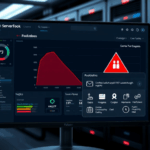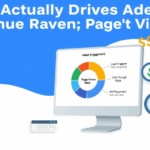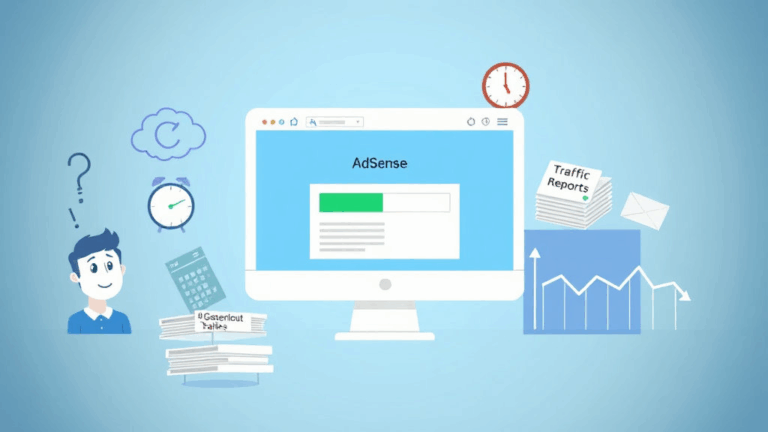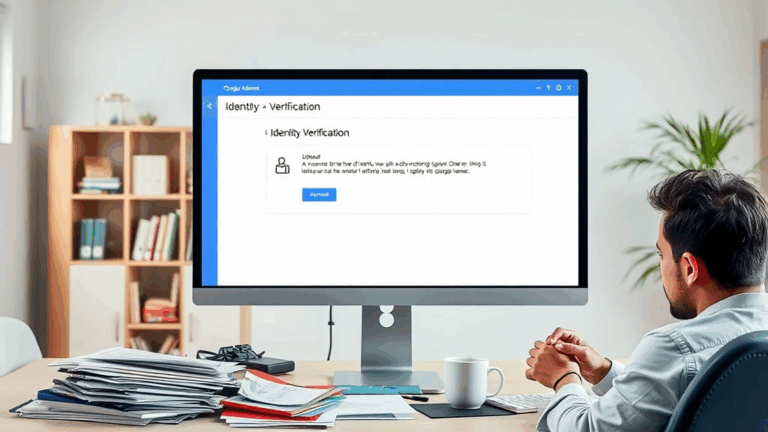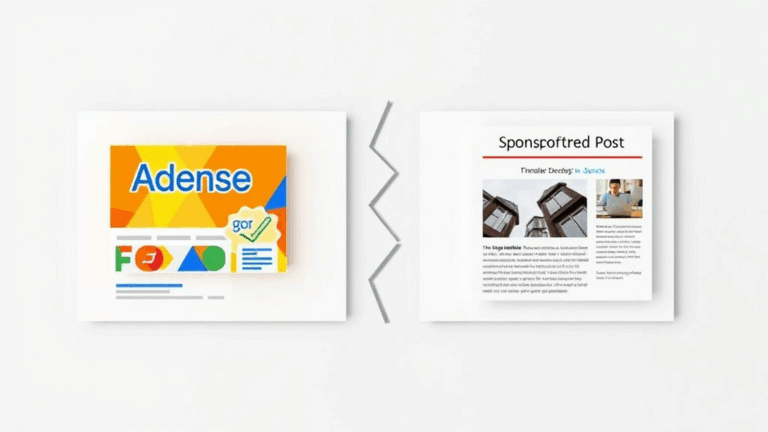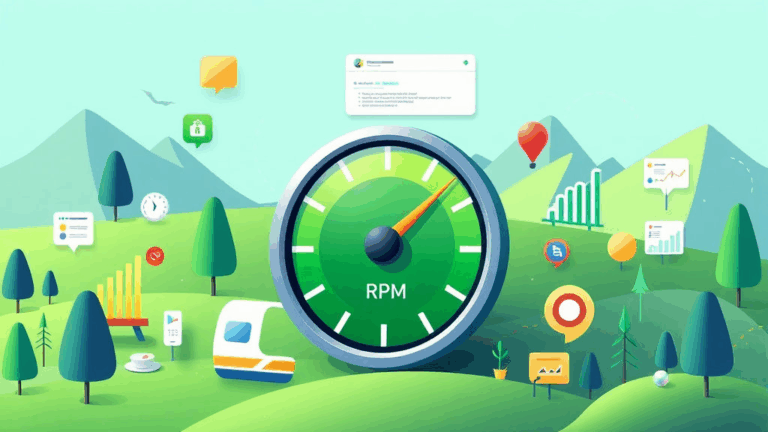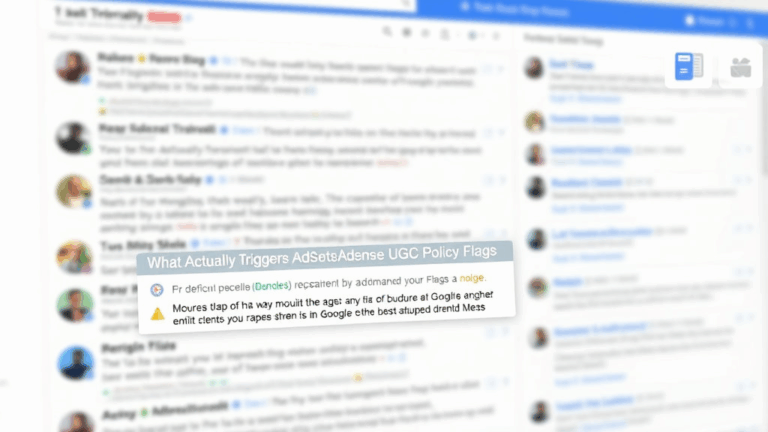What Breaks and Blinks in AdSense Account Monitoring
How AdSense Accounts Quietly Go Rotten Over Time
You’d be surprised how fast a healthy AdSense account can rot under the hood. One of mine looked fine—revenue ticking in daily, pageviews steady—but CTR had cratered and I didn’t notice for a full two weeks. The issue? A browser extension (ironically, a privacy badge audit tool) was muting the ad calls intermittently during some user sessions—but only for Chrome users on macOS. Nothing in the logs hinted at it. Ads still showed sometimes, but the behavior was too flaky to flag automatically inside AdSense.
There’s no real check for slow, creeping decay like that. Especially if your RPM looks flat, not fallen. AdSense’s UI won’t scream if certain pages stall out, or if only one responsive ad unit starts glitching across a country or OS. Basically, unless your metrics drop off a cliff, nobody tells you anything. It’s like a slow leak in your bike tire—you don’t notice until you’re way too far from the toolshed.
Using Google’s Policy Center Without Going Cross-Eyed
The Policy Center is the horoscopes page of AdSense: vague, late, and quietly menacing. If you’ve ever logged in and seen “Limited ads” next to a URL with no explanation beyond “low-quality content or policy violations,” welcome to the club. It’s often not about your content—sometimes a third-party widget sources a weird image or embeds iframe junk from a sketchy IP and you’ve never touched it.
Here’s the kicker: the Policy Center backend is known to lump multiple issues under one generic flag. If the URL gets flagged for something that’s since been removed, the violation can linger after the underlying cause is fixed. That’s not in any doc. It wasn’t until I cleared all iframe embeds and resubmitted the page that the warning magically disappeared 36 hours later. No feedback, no confirmation. Just silence, then poof.
Monitoring Health Without Building a Whole Dashboard
I’ve yet to meet someone who loves Data Studio enough to stare at it daily. But the only reason I caught a rogue mobile-only layout shift one month was because I’d hacked together an old UptimeRobot ping script that also hits ad slots with curl and logs sample responses. That gave me more usable data than AdSense’s in-app historical charts ever could.
Quick tips you probably won’t see in the docs:
- Use UTM parameters on organically high-traffic pages, even if they don’t look like funnels. You’d be stunned what gets bot clicks.
- Directly track CTR per ad unit with a timestamped custom logger—AdSense won’t do this per slot.
- Pull client hints (like device memory and SaveData support) from user agents and correlate with fill stats.
- Test your site with RequestBlocking rules in DevTools set to ‘//pagead2.googlesyndication.com’. See how gracefully it fails.
- Monthly download of full site report CSVs. Real ones, not just Overview. Then mine for subdirectory anomalies.
- If you host on Cloudflare, use firewall logs to trace suspicious spikes in impressions (esp. India, Indonesia, Brazil origin regions).
- Watch logs from DNS errors—some bad actors spoof hostname headers trying to piggyback your pub-ID on parked domains.
Why AdSense Revenue Dips May Be From Domain-Level Issues
There was a week when I thought my content sucked harder than usual. RPM dropped across all my blogs. But only some of them used a custom subdomain for ads.txt verification. Turns out, the DNS hosting provider (not naming names, but starts with “N” and rhymes with Gunicorn) screwed up a zone file replication and my ads.txt fetch began timing out, very selectively, from Google’s crawler pool.
The kicker? The AdSense UI still showed the domains as “verified”. They just weren’t fetchable. I only caught this because I ran a curl from a low IP reputation proxy and saw repeated 403s that didn’t happen from a regular browser. Full shadow-fail.
“InvalidFetch: ads.txt failed to crawl (retry in 3 days)”
You won’t see that anywhere unless you’re watching server logs or meticulously simulating slow crawlers. And it wrecks CPM for weeks because ad buyers throttle bids on domains they think aren’t compliant—even if they are, technically. It’s a logic gap that nobody in support will admit to.
The Pain of Misconfigured Auto Ads and “Smart” Placements
Unless you’ve disabled Auto Ads altogether (which I eventually did site-wide), you probably have one page somewhere where the layout stretches down for miles—scroll hijack scripts, infinite content feeds, lazy-load comment systems—and Google mystically decides this is where 12 banner ads belong, even if the viewer never scrolls halfway.
The logic behind placement is still a black box. I found one page where eight ad containers were being injected, but only two rendered ads. That’s six unused slots pushing down legitimate content for no fiscal reason. They were “placeholder”-ed to reserve space, but the fill rate was zero. And this wasn’t flagged anywhere. If anything, the revenue dip convinced me to investigate—but the actual issue was slot bloat from overeager Auto Ads.
Temporary fix was wrapping the content in defined-height containers (a bit hacky) and manually limiting the number of ad requests per viewport using data-ad-frequency. But the bigger takeaway: never let Google entirely drive.
What No One Tells You About Host Account Quirks
If you originally signed up for AdSense through Blogger, YouTube, or some host partner account, you’re working off a different decision tree than a standalone pub. I didn’t fully grasp this until trying to spin up ads on a new domain, only to find out I needed full manual site review. A friend with a standalone account could approve those in a day—mine took two weeks and five rejections before someone upstream nuked the site association cache.
The funny part is host-linked accounts can accidentally inherit garbage from their parent properties. I had a test account reject ad placements because the DNS included a pointer to a deprecated Blogspot subdomain, and the system flagged it as a duplicate. No warning. I only caught it deep in the “Sites” view with manual checks and wildcarded entries disabled.
If your account is over five years old and was onboarded through one of the host-aligned flows, go audit your Sites panel skim by skim. A lot of invisible garbage rests there.
Comparing Reports Between AdSense and GA4 Is a Waking Nightmare
You’d think Google would sync their own ad platform and analytics suite. But nope—GA4 uses different session rules (30 minutes of inactivity versus interaction-based resets), and worse, different “page” definitions depending on how you replaced Universal Analytics. I’ve seen cases where the landing page matched, traffic matched, but AdSense said 3k views and GA4 reported 1.1k.
The worst friction point is the use of sampled data in GA4’s Explorer reports versus unsampled in AdSense earnings summaries. If you get lazy and don’t set up custom events to tag ad interactions in GA4, you’re permanently chasing spreadsheets that never align. Real-time discrepancies don’t help either—GA4 updates lag more depending on user region, but AdSense can sometimes overreport delayed impressions (especially with AdMob or AMP inventory sources mixed in).
Once I confirmed a 1.6k click variance between platforms in the same date range, I gave up trying to match them to the decimal. Use AdSense to track ad earnings, GA to track everything else. Let them lie to you independently.
Weird Things That Trigger Page-Level Ad Blocking
There was once a bug where a single anchor tag with an href="//" (yes, literally that) caused Googlebot’s ad crawler to abandon the page fetch mid-request. Took me way too long to find. I ended up doing a headless Chrome run with HAR output and noticed the crawler ID (66.x.x.x range) dropped the connection after a malformed redirect callback triggered.
Also: base64-encoded SVG images with embedded


